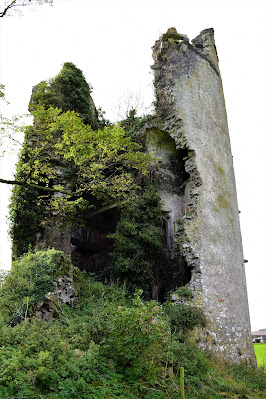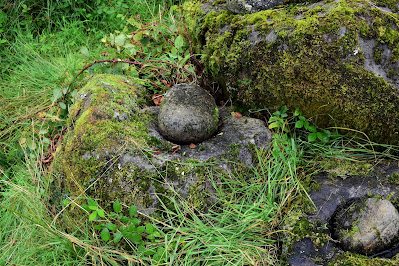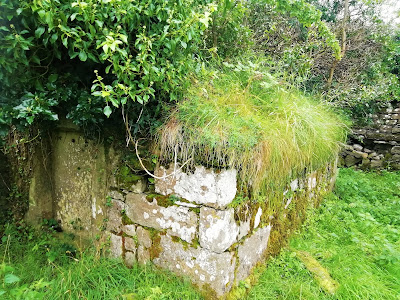Saint Molua
Saint Molua was a mid to late 6th Century monk and is remembered in Laois chiefly at a place called Old Kyle or Clonfertmulloe where he is reputedly buried and at Ballaghmore.
Molua is also remembered at Killaloe on the River Shannon in County Clare. It's place name Killaloe, means the Church of Lua.
It's believed Molua was known by several other names as well including Lugidus, Lua and Lughaidh. His feast day falls on the 4th of August.
Not a lot seems to be known about Molua and it appears he died in the early 7th century.
As well as founding a monastic site at Killaloe he is credited with founding another at Clonfertmulloe in Laois along with many others throughout the country.
There are some fragmentary remains at Clonfertmulloe from an early Romanesque Church and Saint Molua's Stone is also located here. The stone is a large multiple Bullaun Stone on which it is said, two of the marks were made when Molua used to kneel while praying.
Molua's grave is at Clonfertmulloe but when last I visited unfortunately I couldn't locate exactly where it lay. There were no markers for it and I think it may have since become overgrown.
Saint Molua's Trough is an interesting artifact and is located in the grounds of Ballaghmore Roman Catholic Church which is not far from Clonfertmulloe/Old Kyle.
It's believed the trough may once have been used as a reliquary containing remnants or relics of Molua. As far as I am aware it was moved from its original location of Clonfertmulloe to Ballaghmore.
There are some early christian Cross Slabs at Clonfertmulloe but they are difficult to make out and are decaying and degrading badly as time passes by.
I have no idea why we haven't come up with some kind of epoxy clearcoating process to save Ireland's outdoor relics from the ravages of time and acid rain. Most will be unrecognisable within a century, lost forever and remembered only in print and photographs.
In County Clare Saint Molua's Church/Oratory in Killaloe was originally located at Friar's Island on the River Shannon.
In 1929/30 a hydroelectric scheme was begun which would submerge the Island. The
9/10th Century Oratory was deconstructed, placed on a barge and shipped to Killaloe and rebuilt in order to save it.
If you are passing through Laois or are living nearby you might enjoy a short detour to Old Kyle/Clonfertmulloe or Ballaghmore to take in some of the history of Molua in Laois.
There is also a medieval ruin (just a partial wall) in Offaly at Roscomroe which is roughly midway between Kinnity and Roscrea and where once stood an early Irish Romanesque Church.
The remaining medieval Church ruin is called Saint Molua's Church.
There are several fragments from the earlier Romanesque Church in the graveyard which have mostly been reused as gravemarkers.
In the adjoining field is Saint Molua's Holy Well and what I refer to as a Raggedy Tree on which pieces of cloth have been hung devotionally in hopes of spiritual intervention or protection.
Keep the wheels turning............




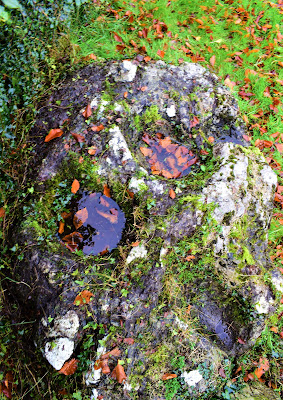





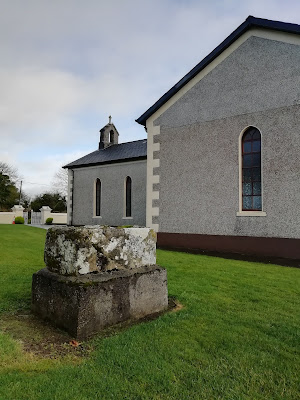




.jpg)
.jpg)
.jpg)
.jpg)
.jpg)
.jpg)


